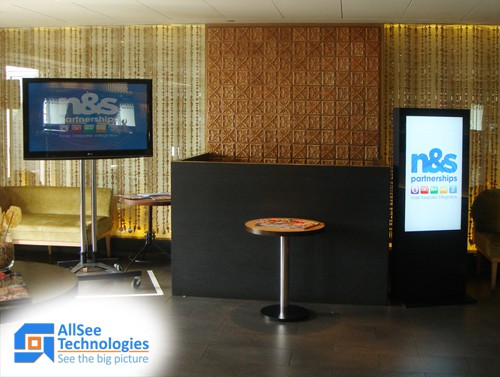
Digital Signage – Why use commercial displays?
In the Digital Signage market there is still confusion amongst some entry level consumers as to the differences between Digital Signage Displays and residential televisions. The purpose of this article is to try and clarify these differences, so that consumers can make an informed decision on their first Digital Signage purchase.
Constant Use
Residential televisions are not equipped to be used 24 hours a day and as such can suffer from image retention issues and colour fade if used for extended periods of time. Digital Signage Displays use commercial grade LCD panels; specifically designed for constant use. They have a rated life in excess of 50,000 hours and feature technologies designed to mitigate the risk of image retention. Digital Signage Displays often feature cooling fans and extra ventilation to ensure that the screens operate within their optimum temperature window.
Warranty
Residential televisions are not designed to be used in commercial environments, and as such, doing so will often invalidate your manufacturer’s warranty. Equally, if a residential television used in a commercial environment were to cause a fire or any damage, you may not be covered under your business insurance.
Display Quality
Display quality is everything when you are trying to get your message across and Digital Signage Displays are designed to do just that. Commercial displays are brighter and have a much better contrast ratio when compared to their residential counterparts. This is due in part to the fact that televisions are designed to be viewed from relatively short distances, whereas in a commercial environment your audience is usually much further away. Digital Signage Displays also feature a much wider viewing angle regardless of the screen’s orientation; as televisions are certainly not designed to be used in portrait!
Aesthetics
Televisions are designed to market themselves, with the manufacturer’s logo and model prominently displayed around the bezel of the display. Not only does this look unprofessional in a commercial environment but it detracts attention away from the screens purpose; to get your message across. Digital Signage Displays are designed with this in mind and should feature no manufacturer’s logos and a sleek, professional and elegant design. Remember, the purpose of Digital Signage is to increase the awareness of your brand not that of the manufacturer.
Hardware
When it comes to standalone Digital Signage Displays an internal media player allows the user to have complete control over their content, without the complexities of networking. These work using a plug and play method, updating the screens internal memory with a USB drive quickly and effectively. There is also the key matter of security, both for your product and for your content. Digital Signage Displays differ from TVs in that they have a rugged metal casing and their LCD panel is protected by a tempered glass face. The screen must also have a lockable compartment for the internal storage and USB port or have an internal flash memory so as the content cannot be tampered with.
For entry level customers it is crucial to understand the differences between if they want to maximise the return on their investment.

Thomas Fraser-Bacon is the Marketing Director for Allsee Technologies. His background is in Digital Signage and Product Design.


